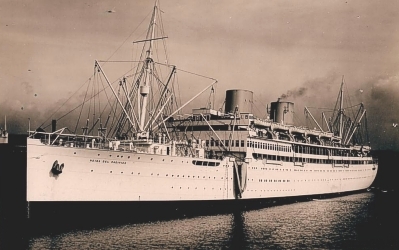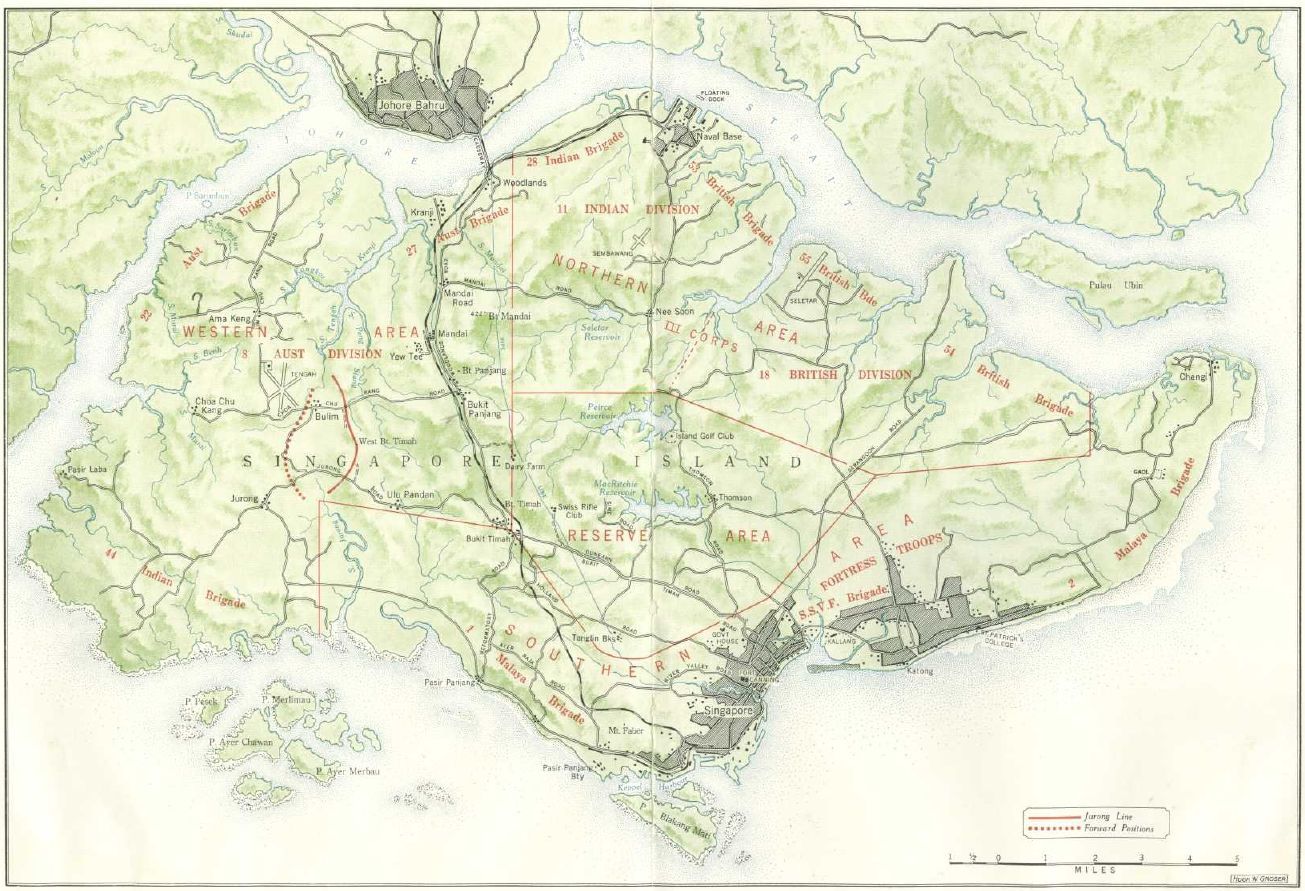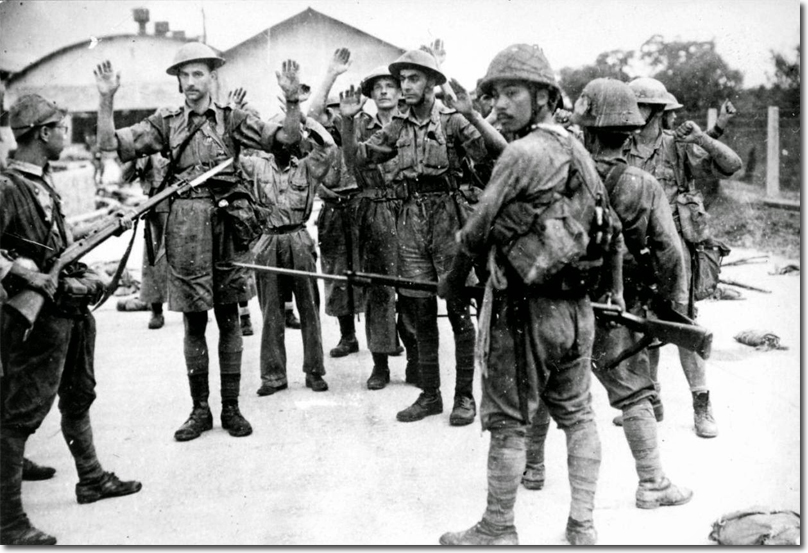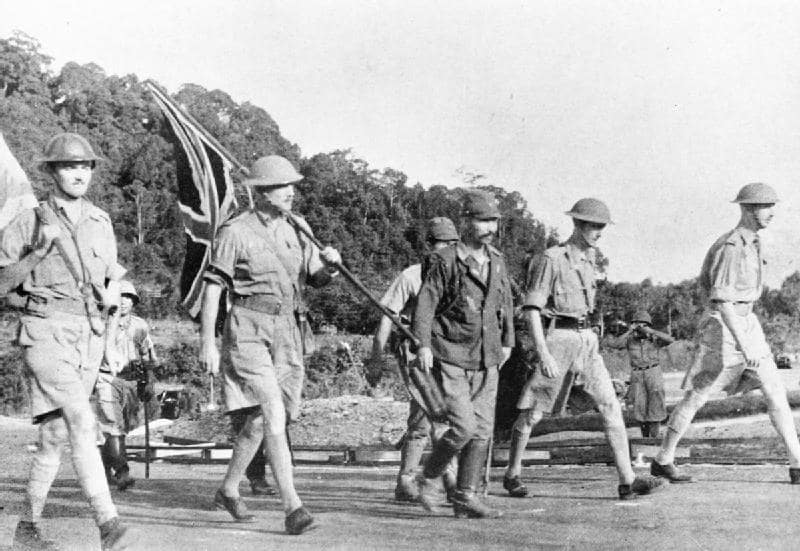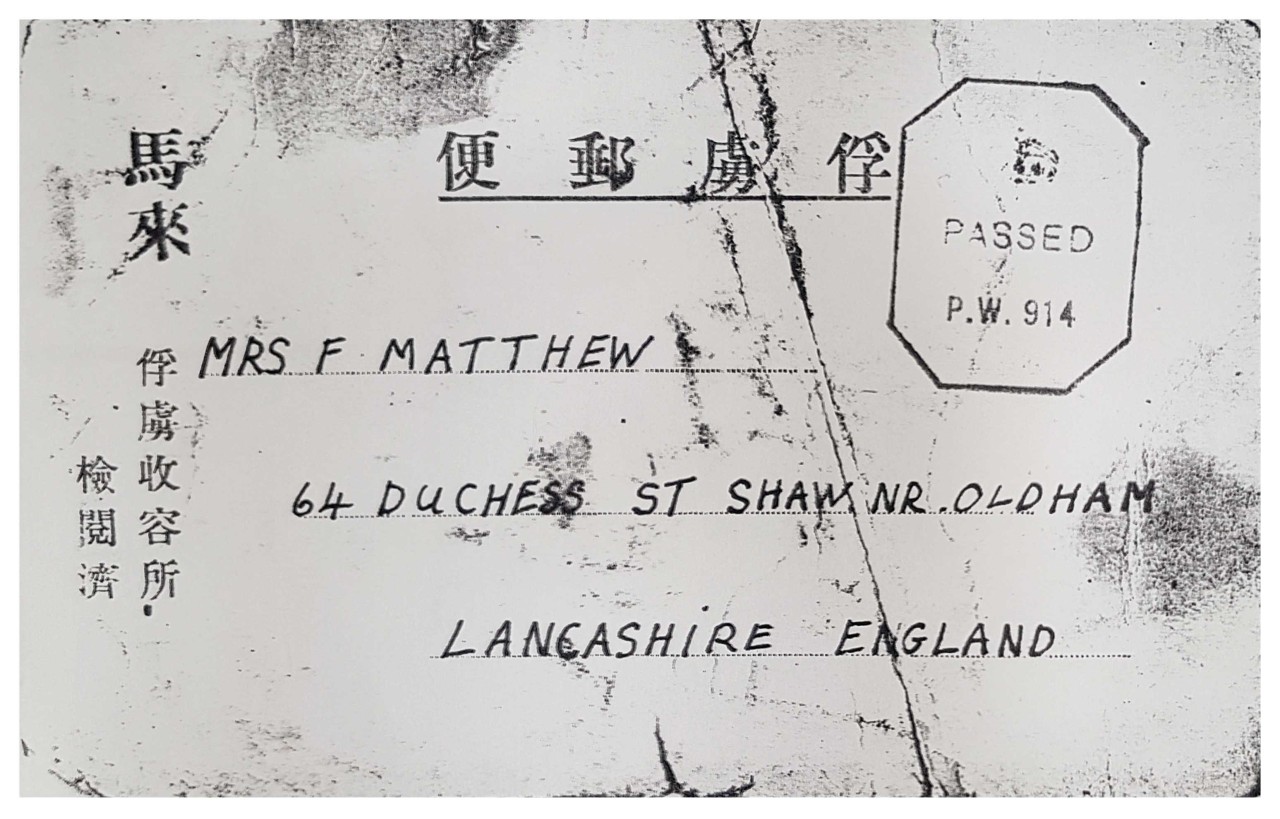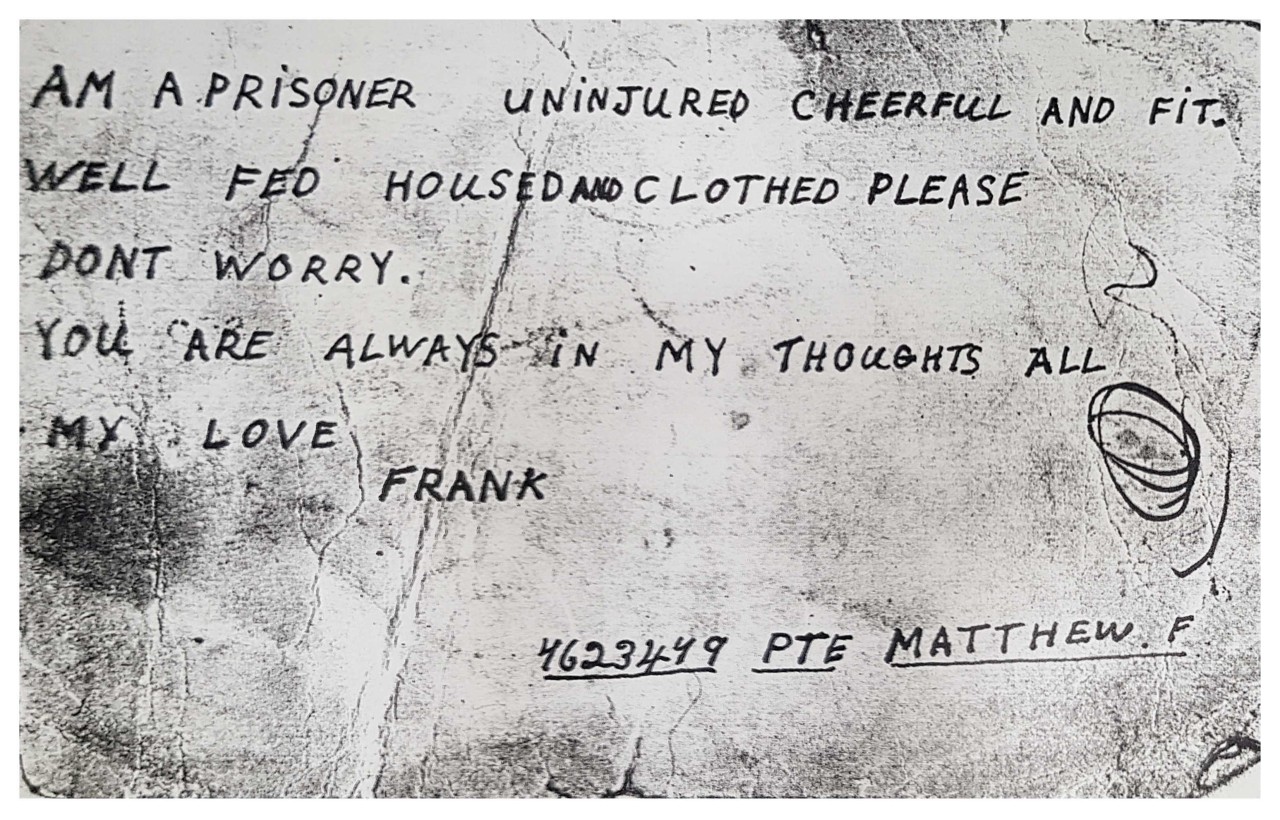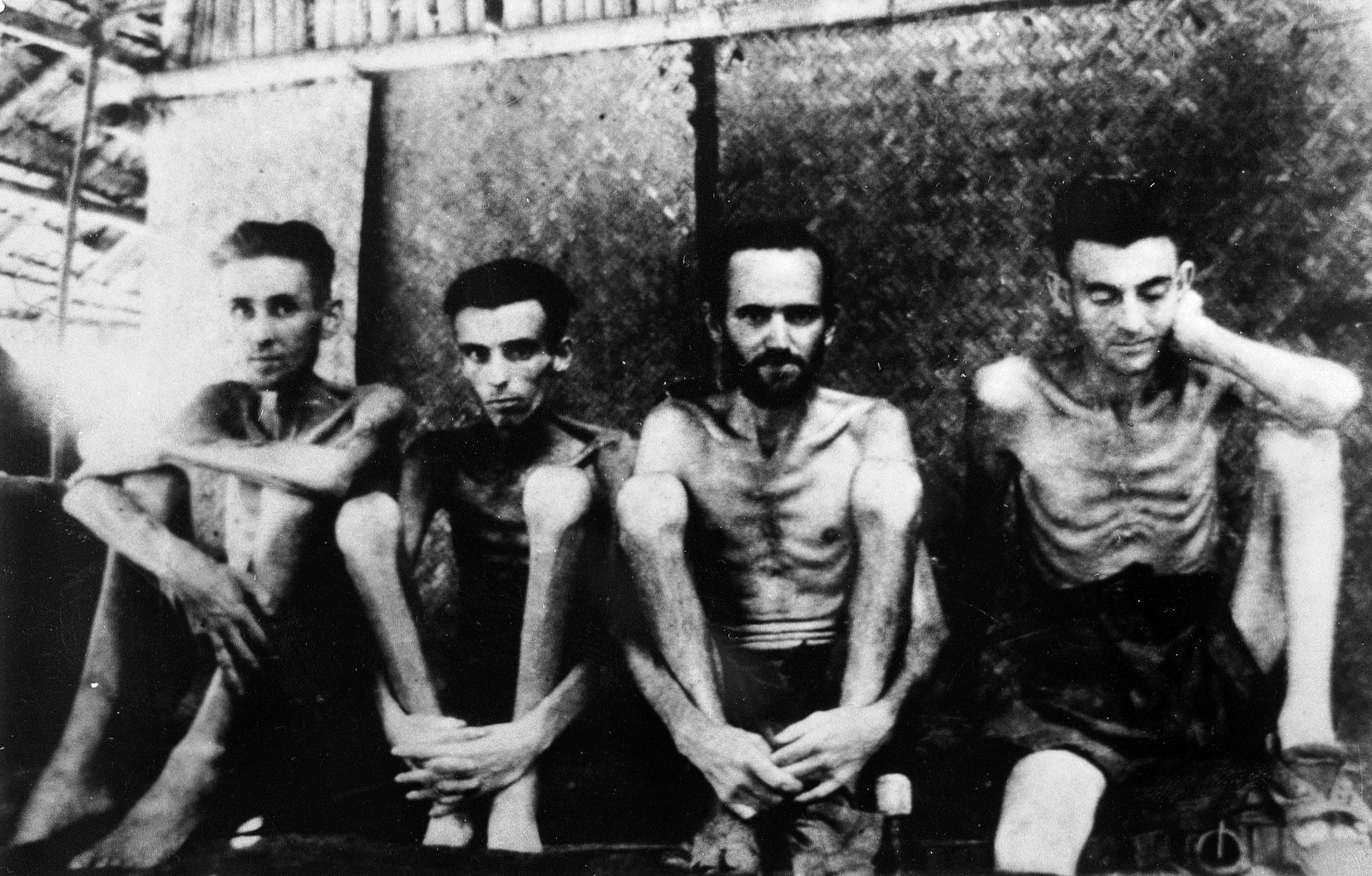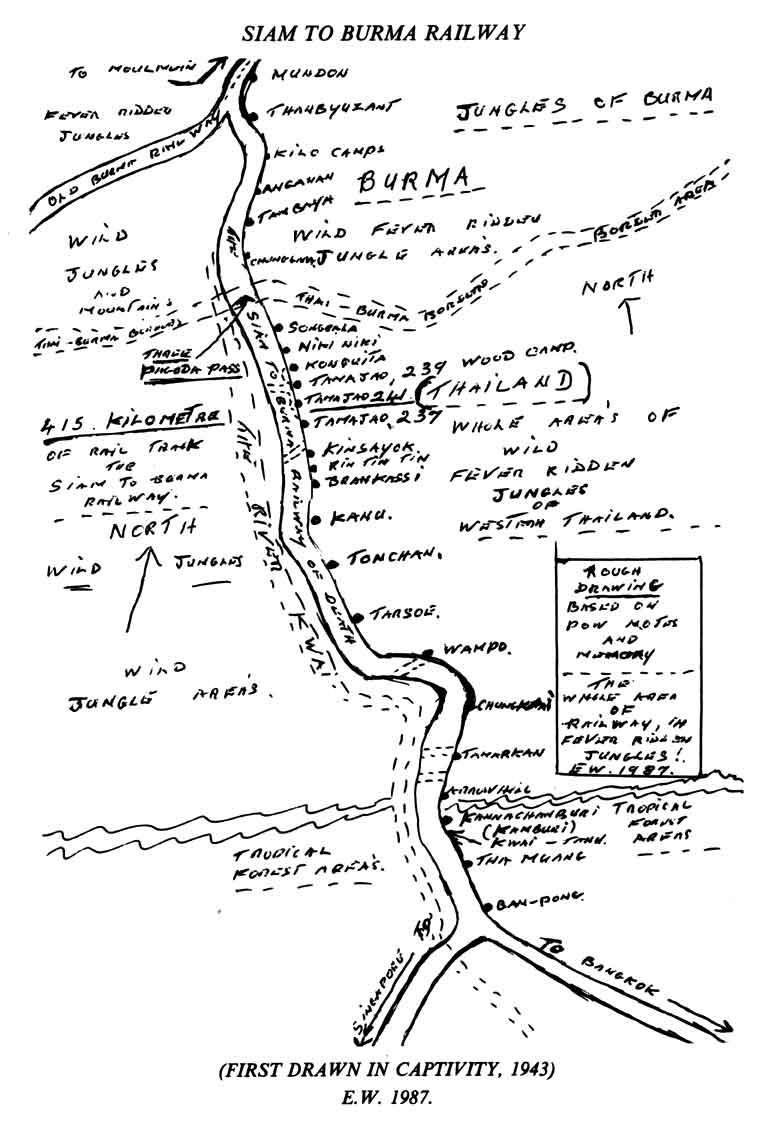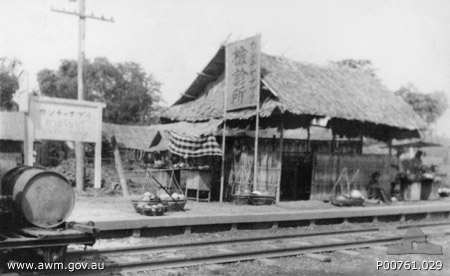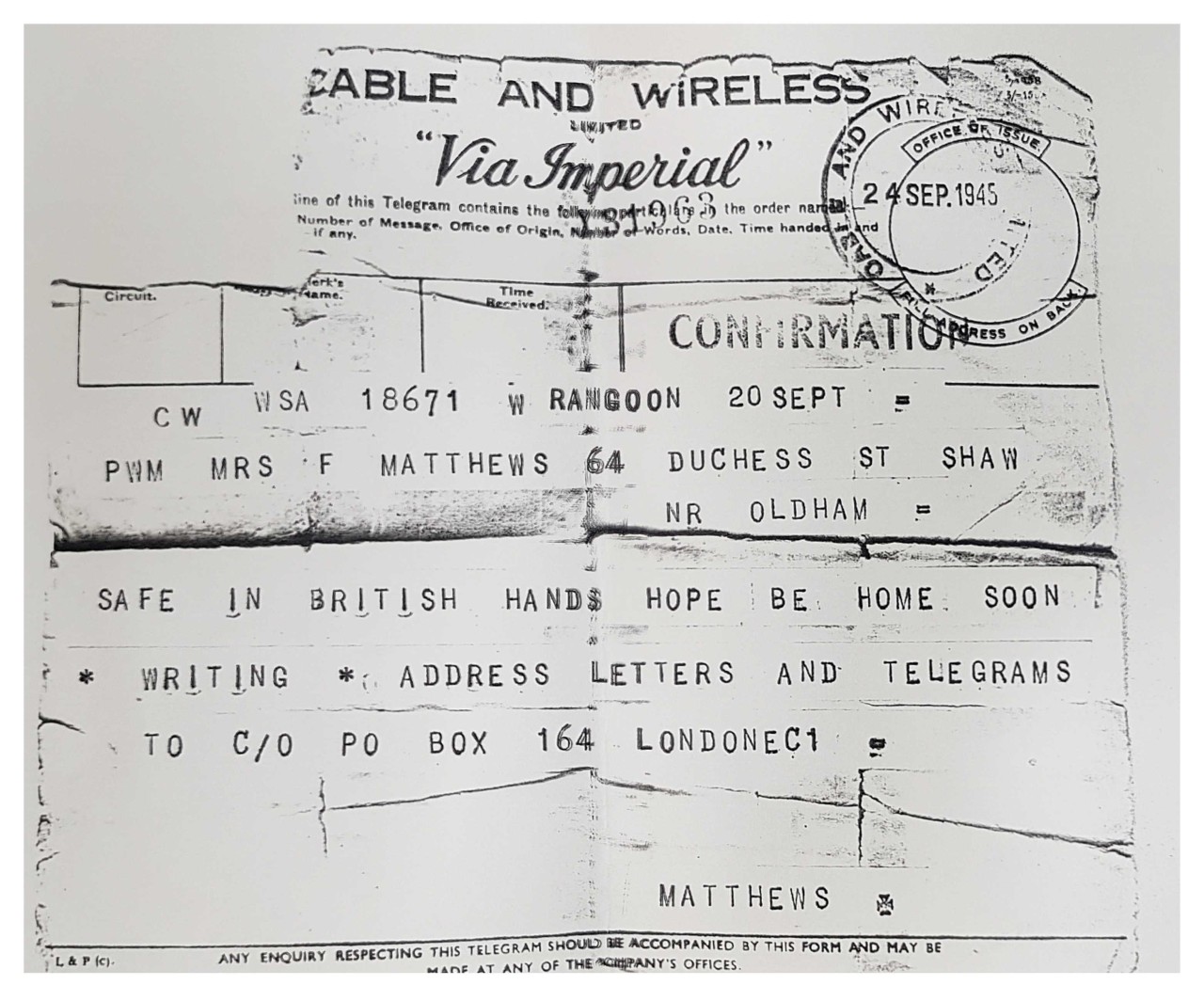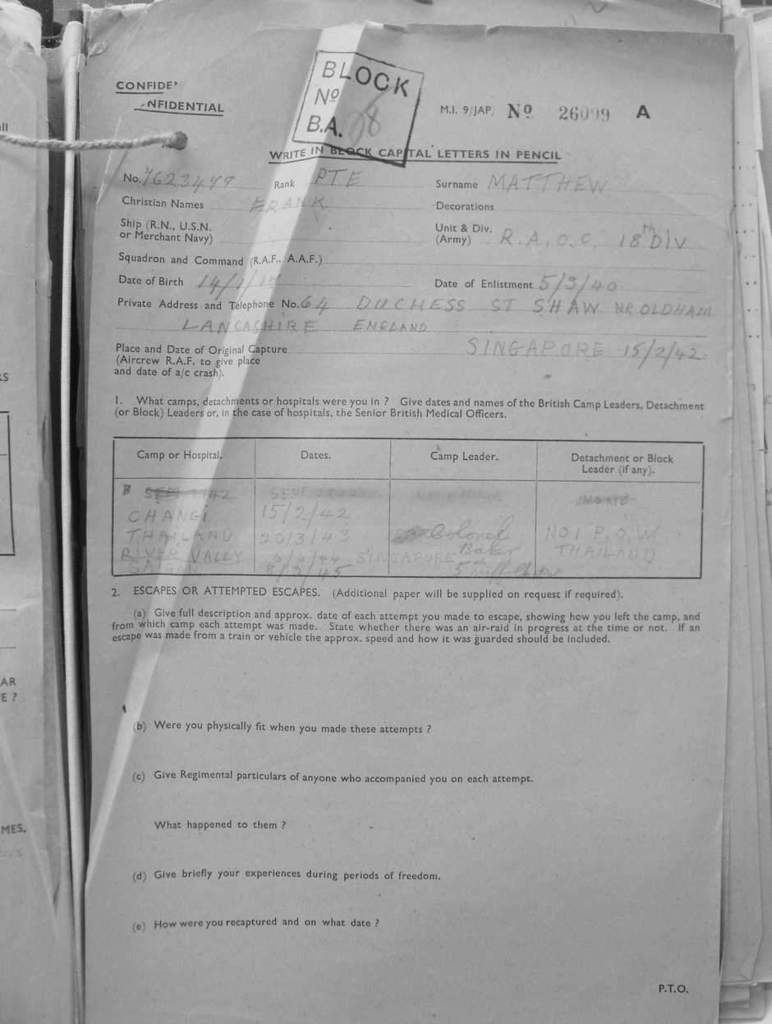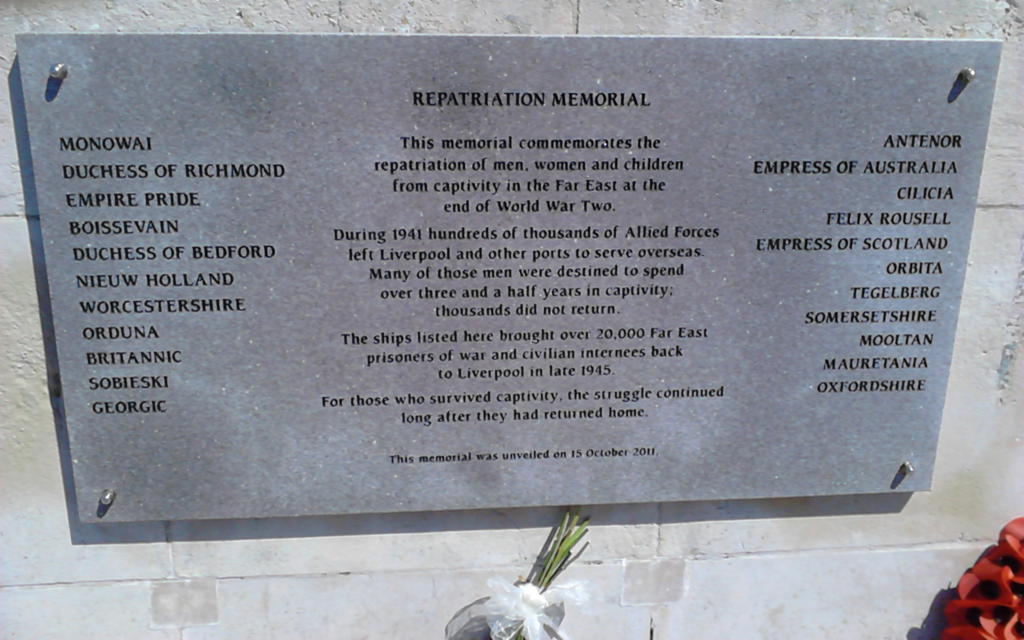Photo courtesy of PumpkinSky - Own work, CC BY-SA 4.0, https://commons.wikimedia.org/w/index.php?curid=57957638
Introduction
Frank Matthew enlisted on the 5th March 1940, joining the Royal Army Ordnance Corps as a Fitter (3rd class). We know from his war records that his first years and months would have been spent training and in home defence duties before he was posted to join the ill fated 18th Division that was ordered overseas at the end of October 1941.
This unit was thrown into the poorly planned and catastrophic fighting that marked the battle for Malaya and the fall of Singapore. Having survived the sinking of his troop ship, his unit was landed in Singapore for only a few days before the British army surrendered on the 15th February 1942. They had little chance to make any difference to the outcome of the battle and we do not know if Frank ever saw an enemy combatant, face-to-face before the surrender.
Becoming a prisoner of war alongside over 80,000 other Allied soldiers and civilians, he suffered the brutality of the building of the notorious Burma Railway and the horror of four different Japanese prisoner of war camps.
Surviving these death camps, he was released at the end of 1945 and travelled home a very sick man both physically and mentally.
His family describe a man struggling to come to terms with both the effects of his physical illnesses but also a fierce anger at his treatment both by the Japanese and on his return home, by his own country. He experienced terrible survivor guilt and was given very little support from his country and government to overcome his personal trauma.
Always a hard worker it was remarkable that Frank continued to find employment as an engineer for the rest of his life and lived until he was 82. He was still working as a taxi driver, supporting his family when he finally found peace.
Frank died on 18th April 1999 and is buried at Crompton Cemetery, Shaw, Oldham with his wife Marie. He is lovingly remembered here by his family and friends.
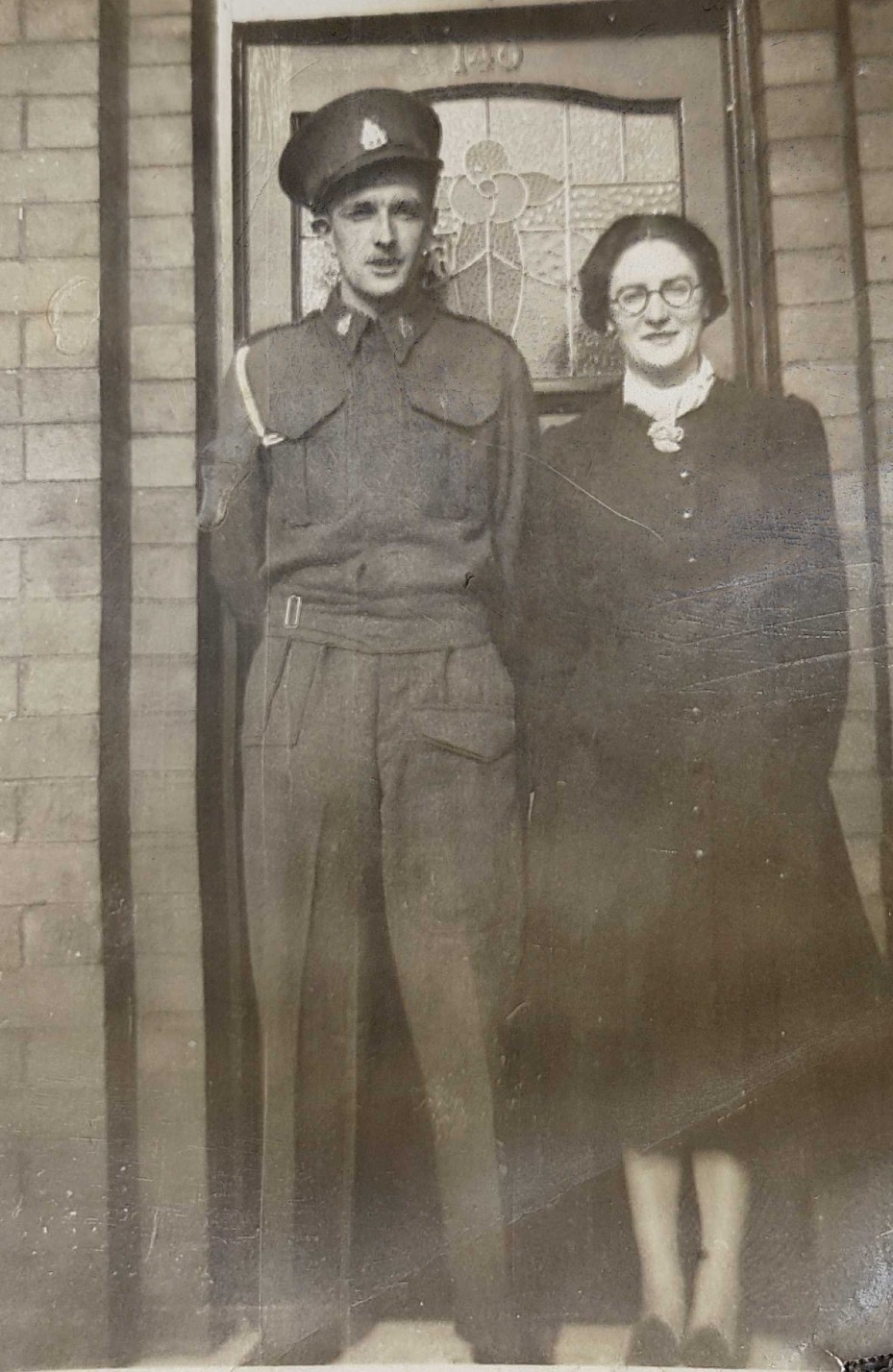
Military Service Timeline
Home
5/3/40 to 24/10/41
1 Year 234 Days
Overseas
25/10/41 to 14/02/42
113 Days
Japanese POW
15/02/42 to 16/10/45
3 Years 244 Days
In Allied Hands
17/10/45 to 18/10/45
1 Day
Home
25/10/41 to 14/02/42
97 Days
Release Leave
23/01/46 to 19/03/46
56 Days
Overseas Leave
25/10/41 to 14/02/42
47 Days
Total Service 6 Years 62 Days*
*These dates are taken from Frank's War Records
Initial Service
Frank had an engineering background and originally joined the Royal Army Ordnance Corps (RAOC) as a Fitter (3rd class). He was first posted to the No. 2 Training Battalion based at Chettwynd Barracks in Chilwell and then quickly on to the 13th Technical Centre.
After this he moved onto the 15th Army Field Workshop.
At the beginning of 1941 Frank was posted to the 18th Division as part of the "C" Recovery Section Field Workshop.
We are not 100% clear on his duties during this period but it is likely he would have initially been part of the home defences as a German invasion was deemed highly likely in 1940. It was also known that engineering units helped with many Blitz related duties such as clearing bomb damage. This was especially true after the fear of invasion reduced and the German Blitz continued.
On 27/4/40 Frank took a quick break from his training to marry Marie Butterworth in the Parish of East Crompton, in Shaw Lancashire.
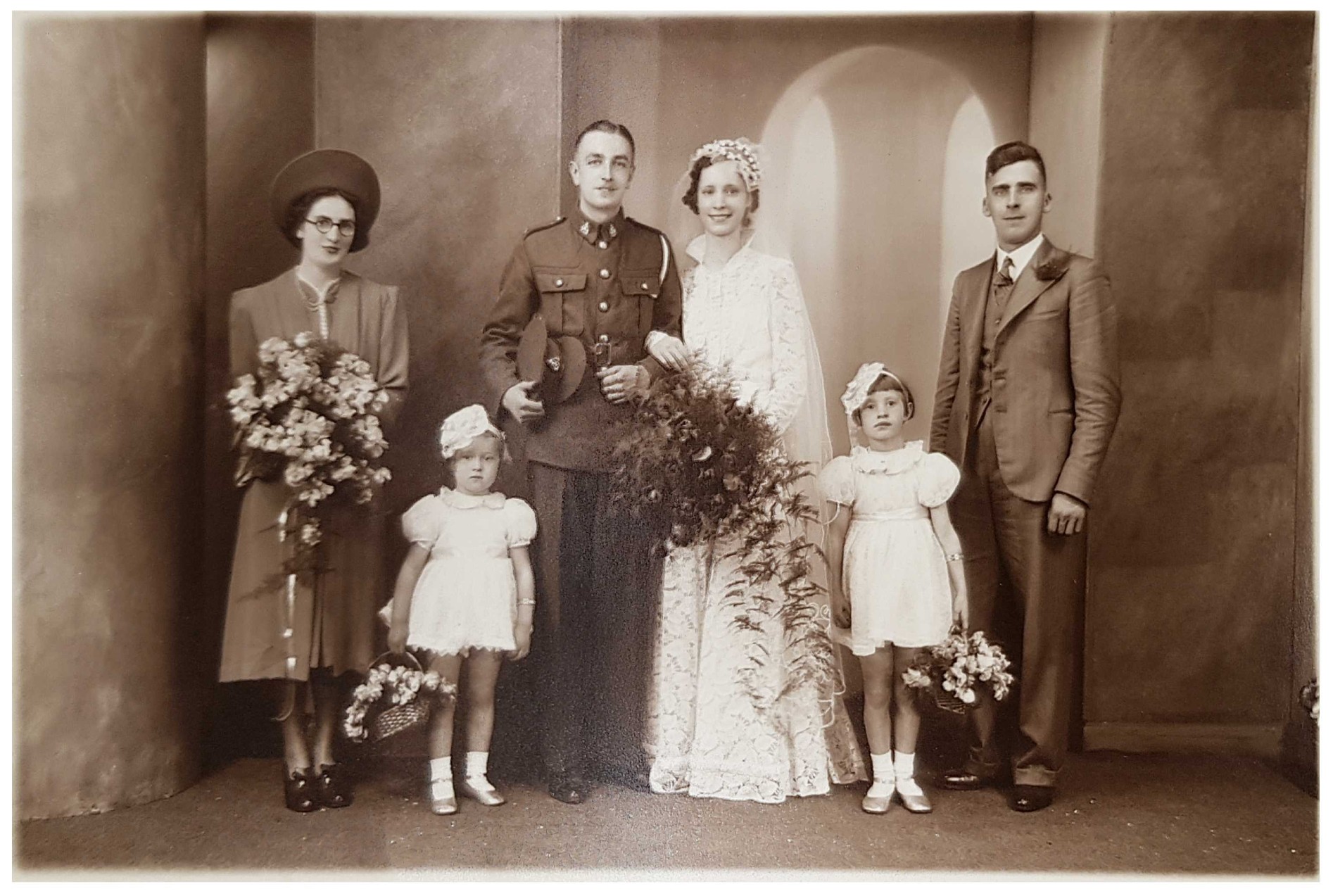
Historical Note: On 1/10/42 he was transferred to the Royal Electrical and Mechanical Engineers (REME) along with large parts of the RAOC that dealt with the army's equipment repair function. This was purely a paperwork exercise as far as Frank was concerned as he was already a prisoner of war on that date.
Frank's unit was finally posted overseas with the whole 18th Division, initially bound for the Middle East to join the 8th Army.
They left Liverpool on 25th - 30th October 1941 bound for Canada.
Units in which Frank Served
No5 Company, No 2 Training Battalion, Chilwell RAOC
5/3/40 to 15/3/40
Posted to 13th Technical Training Centre, RAOC
15/3/40
Posted to 15th Army Field Workshop
13/6/40
Posted to "C" Recovery Section 18th Div Field Workshop
1/1/41
Trade Trained as Fitter General Class II
27/7/41
Embarked overseas (Middle East) 25/10/41

Embarkation for Overseas Duties
His unit embarked from Liverpool at the end of October 1941 originally bound for Nova Scotia but believing their ultimate destination would be the Middle East.
We believe he was on the Reina del Pacifico which was part of part of convoy CT5 heading with other troop ships and Royal Navy escort vessels for Halifax, Nova Scotia in Canada. This was the ship carrying HQ units and the 5th Suffolk Regiment.
Notes from other sources indicate the troops: "Arrived Liverpool approx. 6.30 am. Taken to docks. Saw our ship, the Reina-del-Pacifico. Taken to transit camp for the night. Monday 27th: Back to ship for the day. Loading etc. Wednesday 29th: Stood out in the Mersey all day. Thursday 30th: Set sail approx. 8.30. Due North - 4 boats.
The convoy escorts were changed for US Navy ships that met them in the Atlantic and were originally escorting merchant ships bound for England. Once the fleets had manoeuvred the US vessels escorted them back to Canada even though the USA had not yet joined the war at this point.
Frank would have arrived in Halifax on the 8th November 1941 before re-embarking, we think, on the USS Wakefield and the convoy headed south on the 10th November through the Caribbean, aiming for Cape Town.
The convoy was designated WS 12X "William Sail" although it became known more famously for it's nickname "Winston's Special". The American involvement in this operation, despite the USA not being at war at that time, had been agreed earlier by Roosevelt and Churchill at the Atlantic Charter Conference.
Many descriptions of the journey describe glorious weather, very friendly US Navy personnel and lots of fun when they first crossed the equator with the Navy performing the "Crossing the Line Ceremony" where those who were new to crossing the equator were subjected to various embarrassing ordeals before receiving the "Pollywog Certificate" and becoming a "Shellback".
The 18th Division was originally bound for the Middle East but following the Japanese attack on Pearl Harbour on 7th December 1941, the Division was diverted to strengthen the defences in the Far East and join the battle in Malaya which had been attacked on the same day as Pearl Harbour.
The convoy reached Cape Town around the 9th December 1941 and the troops were granted shore leave. Again the troops seem to have made the most of this R&R and were well looked after by their South African hosts.
The USS Wakefield then set sail for Bombay with the rest of the convoy now designated TF-14.2 arriving on 27th December 1941 where the troops disembarked. A period of rest and training now followed to allow the troops to recover their fitness after weeks at sea in the cramped conditions of a troop ship.
Ships and Timeline
Embarked Liverpool for Nova Scotia, Canada between 25th and 30th October 1941 (recorded dates vary slightly)
Ship Reina Del Pacifico, Convoy CT5
Arrived Halifax, Nova Scotia 8th November 1941
Re-embarked Halifax for Suez via Cape Town 10th November 1941
Ship USS Wakefield, Convoy WS12X "William Sail"
Arrived Cape Town 9th December 1941
Arrived Bombay 27th December 1941
The Sinking of the Empress of Asia
Frank told his family that he was sunk before he even arrived in Singapore and actually said he was sunk twice. We can find no record as yet that describes a second sinking but one ship that took 18th Division troops to Singapore was attacked and sunk, this was the Empress of Asia.
Having left Bombay onboard the Empress of Asia, with four other ships in the convoy, they were attacked and heavily damaged by Japanese dive bombers in the Bangka Straits on the 4th February 1942.
The pictures show the vessel badly damaged and on fire after further attacks in the western approaches to Singapore on the 5th February. The Australian navy sloop HMAS Yarra was manoeuvred alongside and rescued 1804 survivors. 80 others were rescued by other vessels and 16 were reported to have been killed in the attacks. We do not know exactly how Frank was rescued but we do know he was always very keen on Australians after the war.
After this shocking introduction to the war zone, we believe that he would have arrived with other engineering units at Singapore's Keppel Harbour on the 5th February 1942.
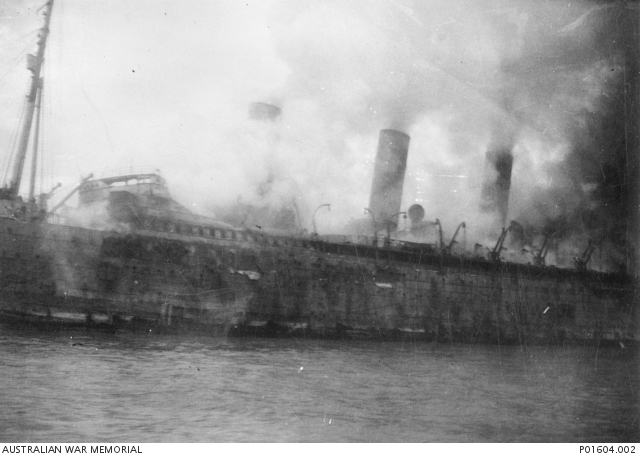

The Battle for Malaya and Singapore
The Japanese invaded Malaya (as it was then known) from Thailand on 8th December 1941, the day after their attack at Pearl Harbour. Quickly out-manoeuvring the Allied forces and with better co-ordination of close air support with their armour and infantry, they progressed rapidly down the peninsula and all Allied forces had retreated to the island of Singapore by 31st January.
Frank's unit arrived on the 5th February and the battle for Singapore began on 7th February. Again despite numerical superiority the Allied troops were poorly led and ill prepared. The surrender came on 15th February and around 80,000 troops were taken prisoner.
One of Frank's contemporaries wrote this of the surrender:
Ken Bailey - "To say that we were humiliated by what we were seeing as victors in a conflict against a supposedly top class army as ourselves, would be a gross understatement. We were all naturally ashamed and disgusted, although knowing that from the very outset, we had lacked the necessary support".
This quote is taken from Wikipedia and gives an idea of how the troops of the 18th must have felt...
According to historian Brian Padair Farrell, Wavell's decision to allow the 18th Infantry Division to be deployed to Singapore was "the least blameworthy of the decisions that he made which had negative consequences—especially for the men of the 18th Division who suffered the terrible years of captivity under barbaric Japanese control". Farrell noted that "Wavell's job was to hold Singapore" and "no other commander in his place would have chosen differently". Gerhard Weinberg wrote that "the constant splitting of divisions ... and the piecemeal tossing of reinforcements into battle all contributed to defeat". This was echoed by Captain Henry Phillips, a former member of the division, who wrote that the division "had been prodigally thrown to the winds", was ill-trained for the situation, and received no intelligence about how the Japanese were armed, dressed, or equipped;
... [T]he division was not permitted to fight as a division ... battalions were divorced from brigades and companies from battalions. Unnecessary difficulties of administration were created and the chain of command disrupted." Phillips called the battle an "unredeemed disaster", and asked for the "misapplication of the 18th Division" to be scrutinised by a public inquiry "to throw more light on the current of events contingent upon so important and so tragic an event in our military history.
Frank became a prisoner of war after just 10 days at the front and joined the mass of troops that were initially imprisoned at Changi prison in Singapore. We don't know if he ever saw an enemy solider in action before he was ordered to surrender.
His bitterness towards his officers and authority figures in general stayed with him for the rest of his life
Prisoner of War
Changi 15/2/42 to 20/3/45
The area around the civilian prison of Changi became a huge POW camp at the end of the fighting.
Frank would have been marched here and with the rest of the 18th Division "found themselves in two barrack blocks and several huts of the India Barracks."
He spent almost a year in Changi and would have been involved in various working parties around the island either carrying out repairs or helping with the chores around the camp by being part of units forming wood chopping parties for example.
Frank did recount stories of small acts of resistance he and his mates carried out in this period, for example adding sand to the petrol tanks of Japanese Officer's vehicles and then spending many hours finding out "what was wrong with them".
The Japanese largely allowed the camp to run itself but as the rations were used up and they had to rely on supplies from the Japanese, the health of the troops began to decline. Vitamin deficiencies caused stabbing pains in the feet (Happy Feet) and swollen itchy testicles (Changi Balls).
Malaria, Beri Beri and Dysentery became common.
Troops were moved from Changi in "Forces" to different countries and areas but most were destined for the Death Railway linking Thailand and Burma. This was often called the "Up country party".
We think Frank probably left as part of Force D as this consisted of 5000 prisoners who departed in four groups between the 14th and 23rd March 1943. These dates match Frank's own records.
Thailand 20/3/43 to 6/6/44
The Burma–Thailand or Death Railway
The Thailand-Burma railway was a 258 mile track route covering the distance between Bangkok Thailand and Rangoon Burma, it was built using slave labour under the control of the Japanese army during the period 1942-45.
6318 British and 2815 Australian POWs are recorded as having died alongside many tens of thousands of Asian labourers.
D Force
These quotes record the actions of D Force:
"Under joint command of British Lt Col G.G. Carpenter and Australian Lt Col Mc Eachern, 2780 British and 2220 Australian departed Changi 14th to 23rd March 1943 for Ban Pong. This mixed force were spread over an area including Tarsao, Hintock, Konyu and Kinsaiyok and some worked on the notorious Hellfire Pass cutting."
"D Force's first task was to help complete the railway between Tarsau and Wampo, 16km to the South. Including the two stretches of wooden rock-face viaduct and associated embankments near Wampo itself. They then moved to camps between Tarsau and Kinsaiyok (172km) where they joined the November arrivals on truly horrendous tasks such as building the "Pack of Cards" bridge at Hintok (155km) and "Hellfire Pass" cutting at Kanu (162km) which remained to be completed during the monsoon."
Frank did not talk about his time on the railway but we know he said he had many Australian mates. Reading contemporary accounts of what others endured it is a miracle anyone survived.
Working without proper tools, brutally beaten by their Japanese and Korean guards, with many serious illnesses, very limited medical care and severely underfed, the prisoners toiled through the most horrendous conditions imaginable.
It is said "one person died for every sleeper laid" and this inscription is written on the wall outside Hell Fire Pass.
River Valley 6/6/44 to 8/3/45
Frank moved back to Singapore after 15 months on the Burma Railway. He must have been desperately ill by this stage.
River Valley camp is described as "one of two camps only separated by a small river/canal with a bridge built across it."
Ex Burma Railway POW Jack Jennings book ‘prisoner without a crime’ noted:
‘The POWs lived in huts about a hundred feet long with wooden sleeping platforms that could accommodate up to 150 POWs. There was once a Roman Catholic Chapel and also a small library consisting of books collected from some of the houses near the camps. Unknown to the Japanese, there was a radio secretly hidden by the POWs on the grounds, which provided them with news from the outside world’.
There is some evidence that POWs here received the most humane treatment from their Japanese captors and were given a significant amount of privileges not found elsewhere.
Saigon
Towards the end of the war may men from the 18th Division were shipped to Saigon in Vietnam. Here they were used in general labour tasks, repairing bomb damage, building bunkers and maintaining railway tracks.
Frank's Liberation Questionnaire show Colonel Baker of the 5th Suffolk Regiment as his camp leader.
We believe Frank ended his war here where the treatment was reported to be better due to the presence of the Vichy French medical resources.
We don't know exactly how Frank was released but we know British troops arrived on 30th August 1945 and repatriations started on 12th September with POWs being flown by Dakota to Rangoon.
We are still trying to identify the ship that Frank came home on.
POW Camps Frank was held in
We know from Frank's own handwritten Liberation Questionnaire that he spent time in four different POW camps. These were:
- Changi - 15/2/1942
- Thailand - 20/3/1943
- River Valley (Singapore)- 6/6/1944
- Saigon - 8/3/1945 (5th Suffolk's went on 8th Feb. 45)
- Released no later than 20/9/45
Release from Prison
The war against Japan officially ended on September 2nd 1945 with the formal surrender ceremony aboard the USS Missouri in Tokyo Bay. This date is now known as VJ Day.
In reality the Japanese Emperor Hirohito had announced their surrender to the Japanese people by radio a few weeks earlier on August 15th 1945.
We know from Frank's Telegram home that he was in Rangoon on 20th September 1945. This was a major Allied hub in Burma, so he must have been freed from prison camp some time before that, probably around the 30th August as the Japanese guards surrendered control to the arriving British forces.
His records show his release date at 2/9/45 but this is also on many other records and is the official date for the end of the war so by default he was free from that date.
At Rangoon priority was given to medical treatment of the men who were extremely emaciated after years of mistreatment, malnourishment and poor diet. It was not unusual for them to weigh as little as 7 stone.
We do not know what vessel he returned home on but he is shown as being released by Allied Forces on the 17th October 1945 and then arriving home on 18th October 1945, only one day later. We assume this was some form of paperwork exercise as we know from his own recollections that it took Frank a frustratingly long time from their release to their arrival back in the UK.
We do know two ships arrived from Rangoon around those dates, these were the Worcestershire on the 16th October and the Orduna on the 19th October. It is likely he was on the Orduna as certainly that carried men from the Suffolk's and Frank showed their Lt Colonel as his Camp Commander. The children of another survivor Geoff Wells wrote: "after a long sea journey on the SS Orduna, Dad arrived at Liverpool docks on 13 October 1945. He first went to a reception camp in England and on 19 October 1945 he was discharged “fit for leave.”
These dates seem to match Frank's closely as do the units involved.
TV Report on the Liverpool Pier Head memorial unveiled to remember the 20,000 troops repatriated through the port after the end of the war.
Discharge from the Army
His last military records also show he was:
- Admitted Crumpsall Hospital Manchester - 12/11/45
- Transadmitted St Mary's Hospital Manchester - 5/12/45
Frank's official discharge date from the army was 5th May 1946. His records show he was suffering "Anxiety State Moderate" and "Gross Somnatic Dysfunction".
His character is recorded as "Exemplary".
Frank was later transferred for further medical convalescence at Southport Promenade Hospital. He was suffering physically from the effects of Malaria and other tropical diseases, had difficulties eating and suffered from flashbacks, panic attacks and seizures.
His wife Marie recalled to her daughter some years later that although "Frank's war had come to an end, hers was just beginning."
